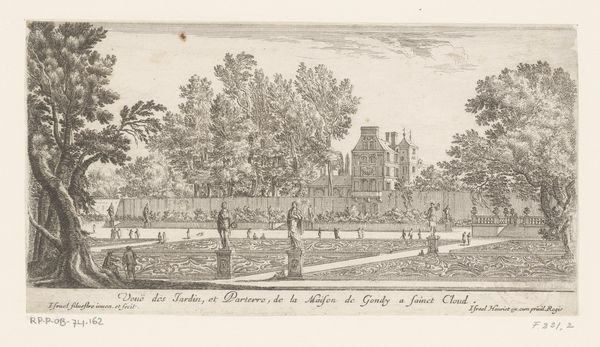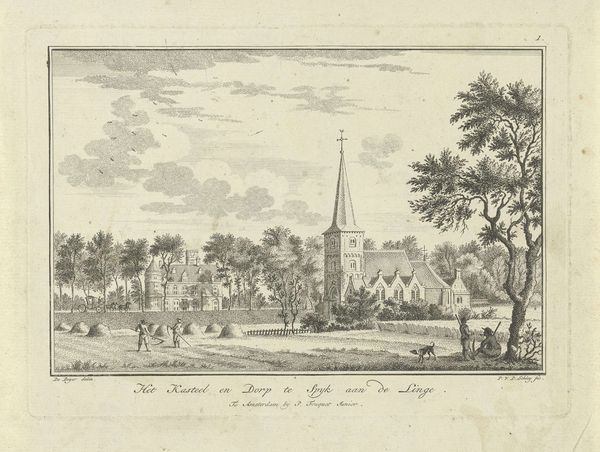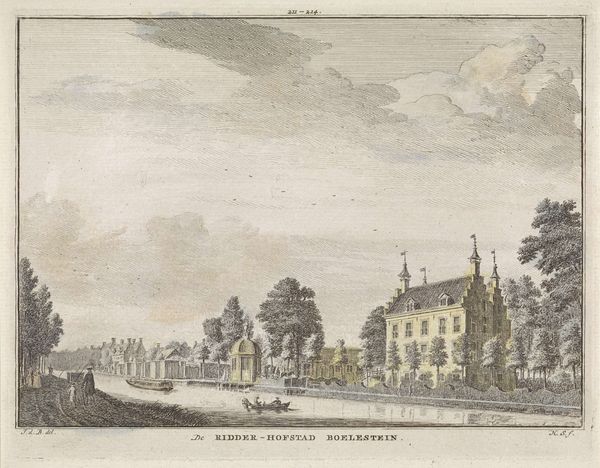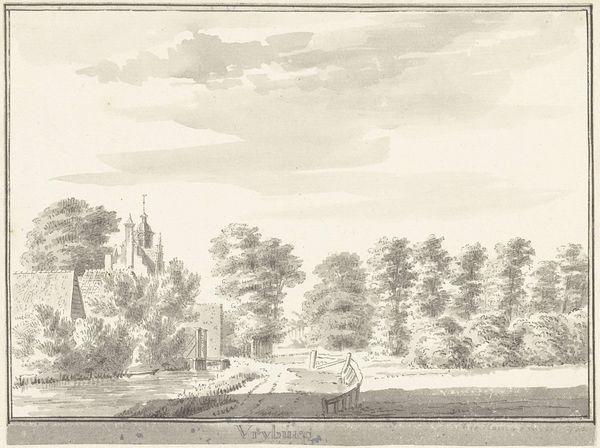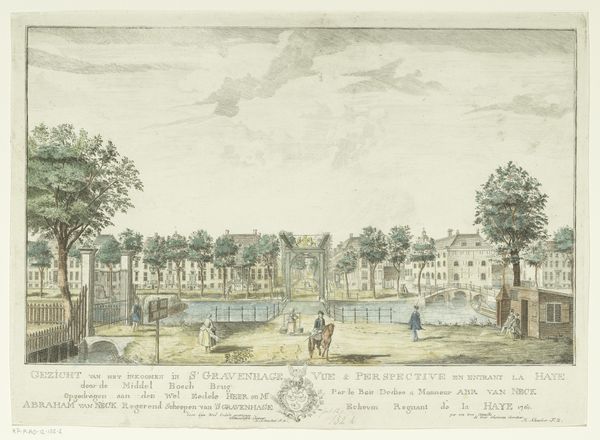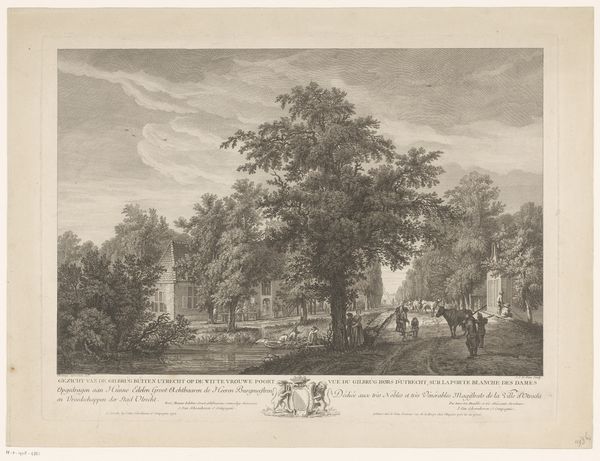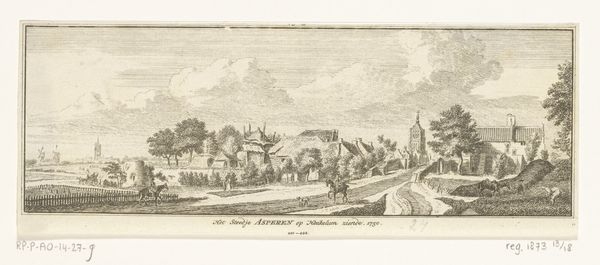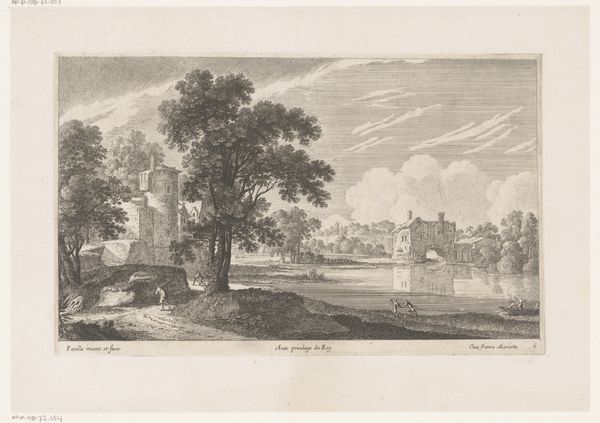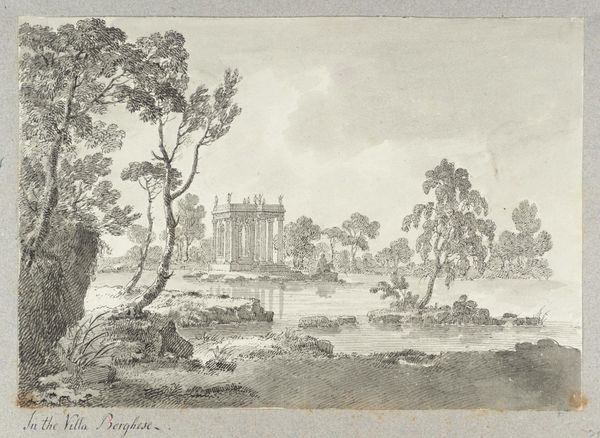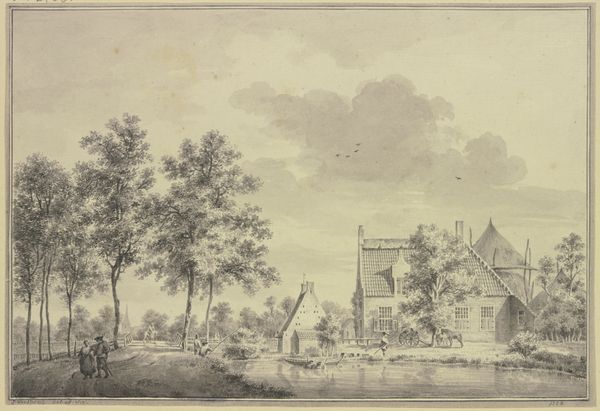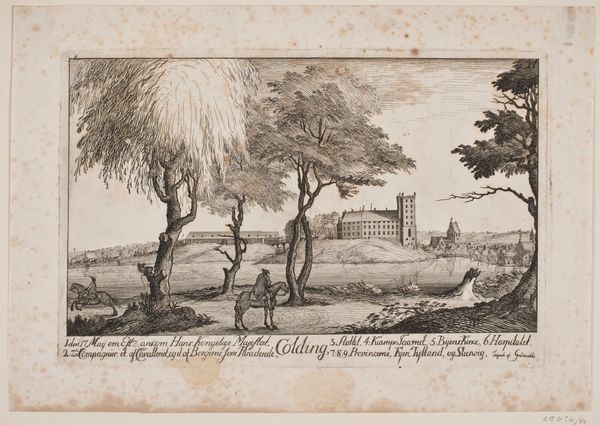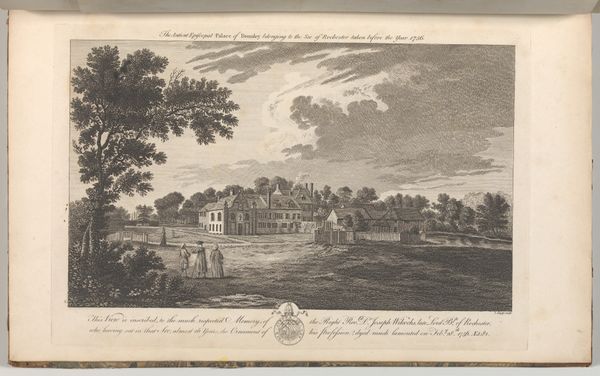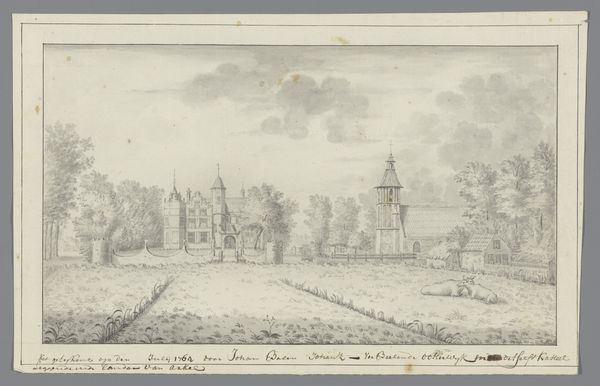
drawing, print, engraving
#
drawing
# print
#
landscape
#
cityscape
#
engraving
#
rococo
Dimensions: height 135 mm, width 240 mm
Copyright: Rijks Museum: Open Domain
Curator: Jan de Beijer created this print, titled "Het kasteel van St. Germain," sometime between 1713 and 1780. It's a beautiful example of landscape art, currently held at the Rijksmuseum. What's your first take on it? Editor: There's a quiet elegance to it. It evokes a sense of calm observation. I am drawn in by its subdued tonal range and precise detailing despite it being just a drawing and an engraving. What does the imagery suggest to you? Curator: Well, cityscapes, particularly of castles, always speak to the idea of power and status. But here, the soft execution and the inclusion of everyday people – strolling figures, horse-drawn carriages – makes the grand architecture seem almost accessible. The rococo stylistic elements underscore the sense of elegance and social hierarchy. Editor: Indeed, seeing ordinary individuals set against the grand backdrop reminds me how carefully these landscapes were designed not just as backdrops for power, but to project it onto the population. It's also important to consider who had the resources and privilege to enjoy the gardens or public space showcased in this drawing. How does this image speak to concepts of national identity? Curator: The careful documentation of such buildings provides, certainly then, a sense of continuity. It reflects cultural identity, in how built spaces like castles are embedded into a nation's story and passed through generations. The print itself enables such transmission. Editor: And the symbolism often present in these meticulously crafted scenes acts as a kind of visual rhetoric. In viewing such buildings we engage in a discussion, and participate, often unaware, in a constructed narrative of class, place and purpose. Curator: That makes me wonder, as a cultural artifact of the Rococo era, whether this image aimed to provoke a sense of wonder in ordinary folk by presenting an idealized and ordered existence. Editor: Possibly, although such 'ideal' views always beg to be investigated. So, by placing art within the historical context we learn to look deeper. Curator: Agreed, this deepens my appreciation significantly, offering so much for both reflection and consideration. Editor: Absolutely, there are many intricate layers of meaning and implications at work.
Comments
No comments
Be the first to comment and join the conversation on the ultimate creative platform.
